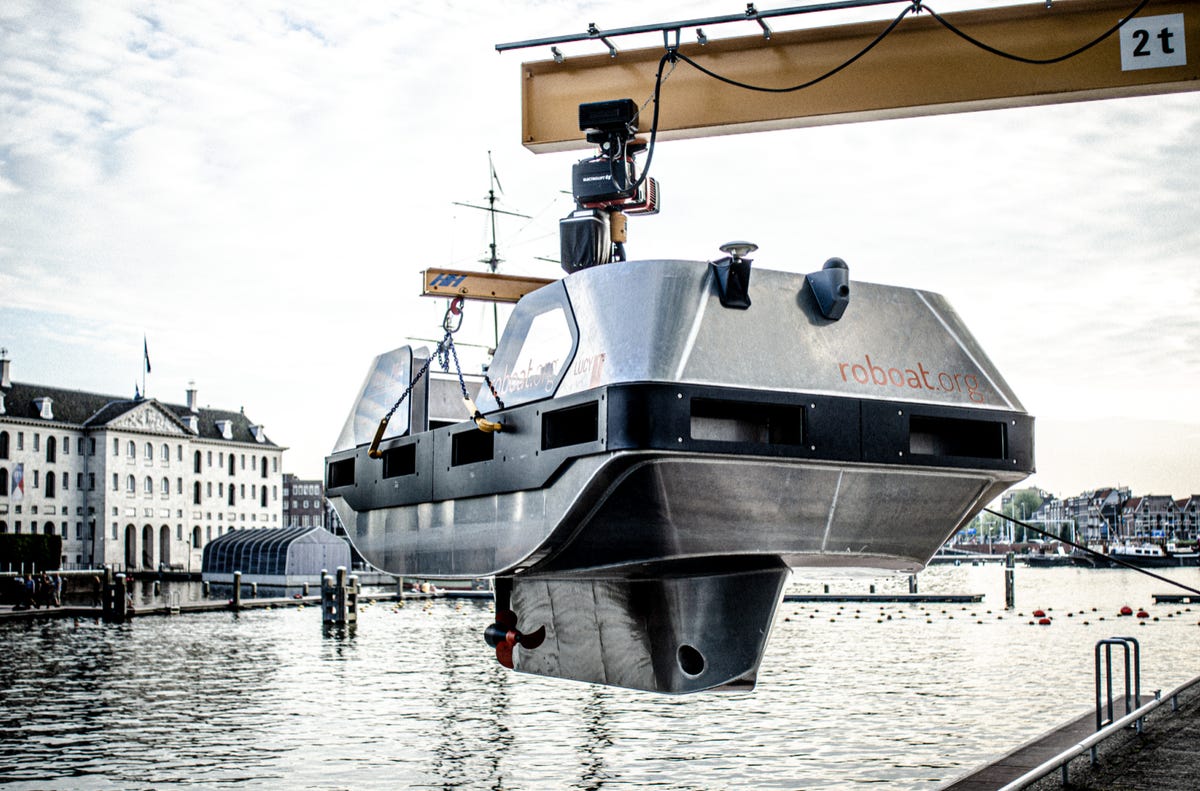
Robot taxi boats take to the water in Amsterdam
Last Updated on January 4, 2023 by Admin
[ad_1]

MIT CSAIL
An autonomous boat taxi, years in the making, has now made it to the waterways of Amsterdam.
The self-driving boat, dubbed Roboat III, is the creation of MIT’s Computer Science and Artificial Intelligence Laboratory (CSAIL), the Senseable City Laboratory, and the Amsterdam Institute for Advanced Metropolitan Solutions.
First developed and tested in pool environments back in 2015, Roboat has undergone extensive redesigns to become a full-scale, autonomous ‘taxi’ service for city residents.
Last year’s version, Roboat II, was a blocky, eyesore-yellow model, two meters in length, that was able to carry two passengers. Despite its appearance, the technology behind the boat — including sensors and mapping technologies — meant that the boat was safely able to navigate itself for three hours with an error margin of 0.17m.
The new design, however, is sleek, black and gray, and can now carry up to five people or 1500kg in cargo.
According to MIT CSAIL and the AMS Institute, Roboat is fully electric, capable of wireless charging, and is equipped with a battery the size of a “small chest,” enabling it to drive itself down canals for up to 10 hours at a time.
Roboat’s control system is similar to that used in self-driving cars: a combination of LIDAR scans, digital map creation, object and obstacle detection, and both sensors and cameras that give the boat a 360-degree ‘view’ of its surroundings.
As waterways can be congested with other traffic as well as objects including bridges, parked boats, and moving vehicles, the scientists decided to tweak the autonomous controls to assume a role described as a coxswain which barks orders to the ‘rower’ boat based on its surroundings.
The propellers are given orders to follow specific paths and goal points based on GPS and continual scanning of the boat’s immediate environment to avoid accidental crashes.
In addition, Roboat’s object detection system is under constant review.
“When the perception picks up an unseen object, like a canoe, for example, the algorithm flags the item as “unknown,” the team explained. “When the team later looks at the collected data from the day, the object is manually selected and can be tagged as “canoe.”
Another improvement to the autonomous vehicle’s design is the use of QR codes. The boat’s cameras are able to scan these codes to guide the vehicle to docking stations — or other boats to create temporary bridges for passengers.
The “full scale, fully autonomous robotic boat is ready to be deployed along the canals of Amsterdam,” the teams say, with public pilots now slated for launch. Human operators play a role, however, in monitoring Roboat deployments.
“The historic center of Amsterdam is the perfect place to start, with its capillary network of canals suffering from contemporary challenges, such as mobility and logistics,” commented Stephan van Dijk, Director of Innovation at AMS Institute.
Previous and related coverage
Have a tip? Get in touch securely via WhatsApp | Signal at +447713 025 499, or over at Keybase: charlie0
[ad_2]
Source link




